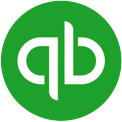Relationship Between CAC and CLV
There is a direct relationship between the CAC and CLV that can easily signify the prospective future of your company. In general, it’s most advantageous for the CAC to be low and CLV to be high.
Or in simpler terms, it’s a good idea to spend less money on acquiring a customer while selling more to existing customers over a longer period.
If your numbers aren’t favourable, make changes to keep your business profitable and growing in the future.
For example, if it costs $100 to obtain a customer that produces a CLV of $500, your company experiences a long-term benefit. But, when the CAC is greater than the total value to be received, it isn’t worthwhile to pursue the new customer under current conditions.
For example, you don’t want to spend $500 to acquire a customer with a CLV of only $100. In this case, perhaps you want to consider lowering your marketing costs while increasing sales to existing customers through upselling.
It isn’t always possible to know all elements required for the calculations of CAC and CLV at any given point. For this reason, it’s important to take a conservative approach when performing the calculations.
Although it may be advantageous to omit future costs, all calculations should project reasonable figures to give an accurate representation of where your business stands. To get the most benefit from your figures, it’s imperative to incorporate all associated variables, including:
- Estimates
- Accruals
- Forecasts
- Projections
- Contingencies

